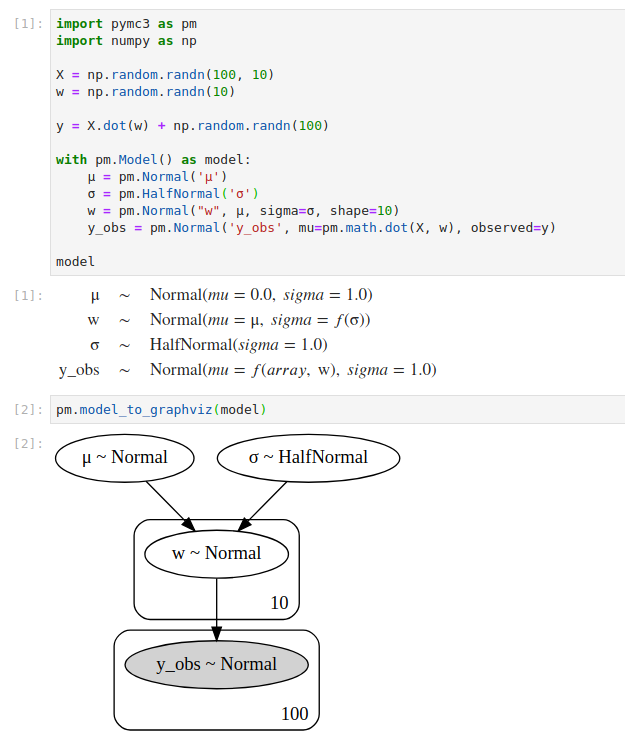

Digraph ( 'unix', filename = 'unix.gv', node_attr = ' ) c. attr ( label = r '\n\nEntity Relation Diagram\ndrawn by NEATO' ) e.
GRAPHVIZ JUPYTER CODE
Save the source code to a file and render it with. Create a graph object, assemble the graph by adding nodes and edges, and retrieve its DOT source code string.

GRAPHVIZ JUPYTER SOFTWARE
edge ( 'institute', 'S-I', label = '1', len = '1.00' ) e. This package facilitates the creation and rendering of graph descriptions in the DOT language of the Graphviz graph drawing software ( upstream repo ) from Python.
GRAPHVIZ JUPYTER INSTALL
To install GraphViz, the installer on this page could be used: GraphViz. edge ( 'course', 'C-I', label = 'n', len = '1.00' ) e. For the purpose of visualization with pm4py, GraphViz installation is required. attr ( 'node', shape = 'diamond', style = 'filled', color = 'lightgrey' ) e. Graph ( 'ER', filename = 'er.gv', engine = 'neato' ) e. subgraph ( name = 'cluster_1' ) as c : c. if showsvg: from IPython.display import display from IPython.display import SVG src Source(dotstring).
GRAPHVIZ JUPYTER UPDATE
update ( style = 'filled', color = 'white' ) c. This page shows Python examples of graphviz. attr ( style = 'filled', color = 'lightgrey' ) c. subgraph ( name = 'cluster_0' ) as c : c. """""" from graphviz import Digraph g = Digraph ( 'G', filename = 'cluster.gv' ) # NOTE: the subgraph name needs to begin with 'cluster' (all lowercase) # so that Graphviz recognizes it as a special cluster subgraph with g. edge ( 'LR_2', 'LR_5', label = 'SS(a)' ) f. Assuming clf is a decision tree exportgraphviz(clf, lumns, filledTrue, roundedTrue) next step install graph viz windows and make sure. attr ( 'node', shape = 'doublecircle' ) f. attr ( rankdir = 'LR', size = '8,5' ) f. Digraph ( 'finite_state_machine', filename = 'fsm.gv' ) f. If you need to render arbitrary strings (e.g."""""" import graphviz f = graphviz. HINT: If you are using an rpm-based system, by far the easiest way to determine all the build dependencies is to download the, run: rpmbuild -rebuild 2>t, then edit t into a yum install command. Have a special meaning in the DOT language. render ( 'doctest-output/round-table.gv', view = True ) # doctest: +SKIP 'doctest-output/round-table.gv.pdf'īackslash-escapes and strings of the form Save and render and view the result: > doctest_mark_exe () > dot. replace ( ' \\ ', '/' ) 'doctest-output/round-table.gv.pdf' render ( 'doctest-output/round-table.gv' ). pip install ipywidgets jupyter nbextension enable -py widgetsnbextension. There are two options to install ipywidgets, through pip and conda. Save and render the source code: > doctest_mark_exe () > dot. Jupyter widgets are interactive elements that allow us to render controls inside the notebook. source ) # doctest: +NORMALIZE_WHITESPACE +NO_EXE // The Round Table digraph edge ( 'B', 'L', constraint = 'false' )Ĭheck the generated source code: > print ( dot. node ( 'L', 'Sir Lancelot the Brave' ) > dot. node ( 'B', 'Sir Bedevere the Wise' ) > dot. node ( 'A', 'King Arthur' ) # doctest: +NO_EXE > dot. Digraph ( comment = 'The Round Table' ) > dot #doctest: +ELLIPSIS Īdd nodes and edges: > dot.

Install Python packages conda install python-graphviz conda install -c. Create a graph object: > import graphviz # doctest: +NO_EXE > dot = graphviz. In addition to Jupyter, the Anaconda Python distribution comes with two package.


 0 kommentar(er)
0 kommentar(er)
